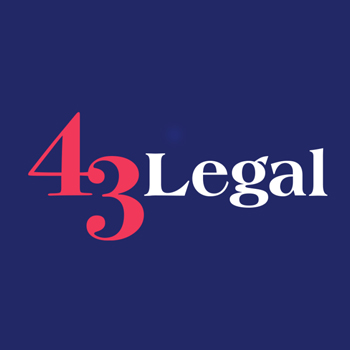Why Every Successful Business Needs A Risk Register
Does your business have a risk register? If not, you are neglecting a powerful tool that can not only protect you from risk-related disasters, but also help identify unforeseen opportunities.
A comprehensive risk register provides a strategic approach to risk management, allowing you to identify, assess, and mitigate potential risks, which is crucial in preventing costly and stressful commercial disputes.
What is a risk register?
A risk register, also known as a risk log, serves as a crucial tool in risk management, aiming to identify potential challenges that may impact the implementation of a project plan or business strategy.
The risk register forms an integral component of any comprehensive risk management framework. It aids managers in calculating risks, assigning priority levels, outlining mitigation strategies, and specifying the respective risk owners. By doing so, every project team member gains insights into effectively responding to project/business risks.
What are the functions of a risk register?
Assessment and Prioritisation
Once risks are identified, the next crucial step is to assess and prioritise them based on their potential impact and likelihood. A well-constructed risk register provides a framework for assigning risk ratings and priorities. This enables you to focus on addressing high-priority risks that pose the greatest threat to your plans and targets. Prioritisation also aids in allocating resources efficiently and tailoring risk mitigation strategies to address the most critical issues.
Compliance and Regulation
Few occurrences will frustrate your project and/or business goals faster than a regulatory investigation. A risk register helps you keep track of the evolving regulatory landscape and ensures compliance risks are adequately addressed. By maintaining an up-to-date risk register, you also have written proof of your commitment to regulatory compliance, which is crucial for maintaining trust with stakeholders and potential investors.
Strategic Decision-Making
The trouble with risks are they have a nasty habit of blindsiding you on an otherwise uneventful day. Creating a risk register forces you to deep dive into a project’s or strategic plan’s intricacies and make informed decisions that align with your organisation’s overall risk appetite.
Resource Allocation
Effective resource allocation is a crucial determinant of business success. A risk register aids in identifying resource requirements for mitigating potential risks. Whether it involves financial investments, technology upgrades, or talent acquisition, understanding the resource implications of various risks enables you to allocate resources wisely. This, in turn, contributes to operational efficiency and cost-effectiveness.
Stakeholder Confidence
Stakeholders, including investors, customers, and employees, place a premium on the stability and reliability of a business. A well-maintained risk register demonstrates a commitment to transparency and risk management. It also helps create a positive organisational culture that values risk awareness and preparedness.
Project Management
If your business is project-led, a risk register is an indispensable tool. It ensures your project manager/s identifies potential obstacles, anticipates challenges, and develops contingency plans. This will help ensure the project’s success, and minimise the impact of unforeseen events on timelines and budgets.
Insurance and Risk Financing
Understanding and documenting risks in a risk register is crucial in obtaining insurance coverage and managing risk financing. Insurers often require detailed information about a company’s risk profile, and a well-maintained risk register is a valuable resource during the underwriting process. Additionally, businesses can use the risk register to explore alternative risk financing strategies and ensure they are adequately covered against potential losses. Finally, a risk register mitigates the risk of over-insurance (purchasing or maintaining insurance that is not actually required).
Crisis Preparedness
All organisations need a detailed disaster mitigation plan. A risk register will help you identify critical functions of the business that could be affected by a catastrophe. For example, if there is a fire, flood, or earthquake happened (although rare in the UK, they do happen. In 1185, a significant earthquake in the Midlands caused extensive damage), and you were unable to access your premises, staff need to know where to access backed-up files, stock, and other equipment.
What is the difference between a risk register and a risk matrix?
A risk register and a risk matrix share similarities as tools that evaluate the level of risk and play pivotal roles in contingency and risk management plans. Nevertheless, distinctions exist between them. The risk matrix functions as a visual aid, plotting each risk on a grid.
The risk matrix gauges the likelihood of a risk occurrence, ranging from rare to almost inevitable, and assesses its severity, spanning from insignificant to severe. Furthermore, it utilises colour-coded indicators to denote the priority of each risk outlined in the matrix.
Conversely, a risk register also addresses the impact of risk on a project but takes the form of a spreadsheet rather than a graphical representation. Consequently, it furnishes more comprehensive details, encompassing a risk’s description, the corresponding response, and the individual responsible for identifying and mitigating that specific risk.
Final words
The benefits of a well-maintained risk register are extensive and broad, from identifying and assessing risks to facilitating strategic decision-making and crisis preparedness. By integrating risk management into your organisation’s culture, you will enhance resilience, protect commercial interests, avoid disputes, and create a foundation for long-term growth.
To find out more about any matters discussed in this article, please email us at info@43legal.com or phone 0121 249 2400.
The content of this article is for general information only. It is not, and should not be taken as, legal advice. If you require any further information in relation to this article, please contact 43Legal.


